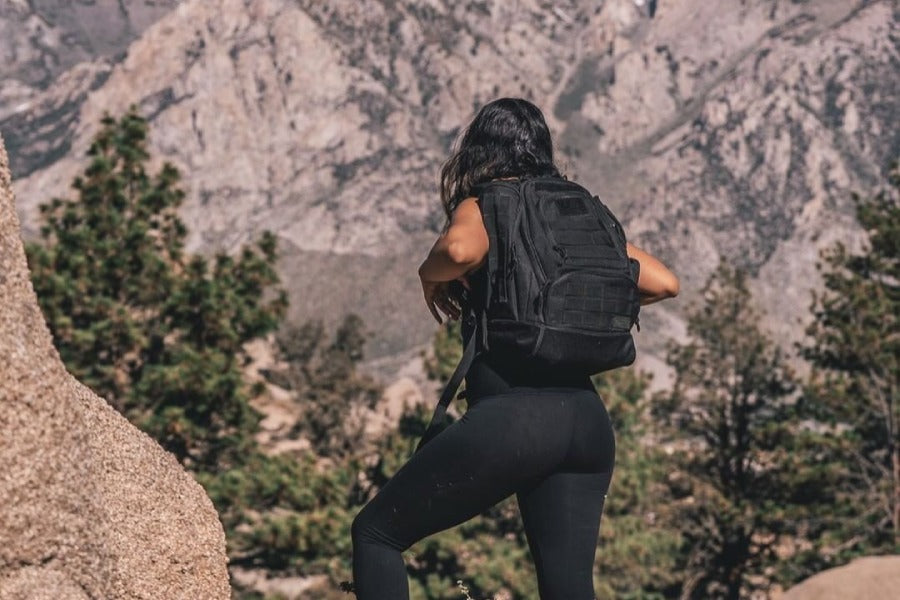4 Tactical Traveling Tips: How to Pack a Hiking Backpack for Your Next Adventure

Conquering the great outdoors is the ultimate skill test for hikers and survival enthusiasts. Survival skills can help you succeed. But your packing preparations set the tone if you’re coming out of the wild better or beaten.
That said, every journey person's job is to learn how to pack a hiking backpack.
Learning the best way to pack a hiking backpack is a manageable task. A mindful attitude and attention to detail are your best tools for pulling it off.
This article could solve your dreadful dilemmas if you're still finding holes in your ability to pack efficiently.
How to Pack a Hiking Bag Like an Experienced Hiker
Pun is unintended, but one needs to unpack the art of packing before any gear enters any bag. Packing things for your trip can be overwhelming. Here are 4 tips to help ensure you have everything you need in a convenient package:
1. Recognize the Season and the Location
Season and location significantly influence the types of gear you must carry with you.
Venturing during summer at mid to high temperatures requires thinner clothing and sleeping bags. If you think it’s going to rain, carry only a few pieces of clothes that are light and dry quickly. Make sure you also have a waterproof jacket or a rain jacket to offer protection against sudden rainfalls.
Hiking in terrains that have cold climates calls for gear that keeps you from getting wet and cold. Make sure you have sufficient base layers to alternate. Insulating and outer layers are reusable, so you don’t need to change daily when hiking for days. The same goes for gloves, headgear, and mittens.
2. Play the Game of Zones
When backpacking, item placement is crucial for optimal comfortability and weight distribution. Do this by dividing your bag's compartments into four zones: bottom, middle back, front, and top.
Use the bottom and front zones for hosting midweight and lightest items, respectively. You should place your heaviest gears in the middle back zone. This brings the bulk of the pack's load closer to the hips and your center of gravity. Lastly, the top zone offers easy access for quickly pulling items (like first aid kits) out of the bag.
Tip: Wearing your bag too low pressurizes the shoulders. So, wear your backpack at least an inch from your waist for more comfort.

3. Identify Your Gears and Essentials
Want to learn how to pack a backpack for day hiking versus multi-day ones? In practical terms, you need the same gear, no matter how long the hike lasts. But your food, clothes, and other daily essentials will vary.
When packing your essentials backpack, consider comfort, fuel, cleanliness, and protection. Bring energy-dense food and enough supply of hydration. If you expect to encounter water sources, water filters and purification tablets are a practical solution. It reduces your load since you won't have to carry multiple water bottles.
Avoid taking bulky items. For instance, instead of cotton towels, opt for a medium-sized microfiber towel instead.
Don't assume someone will take care of anything you leave behind. Remember to clean as you go. Carry enough waste bags to contain your trash and toilet paper.
The easiest way to learn how to pack a backpack for hiking is to make a list. Here’s an example:
What to Bring:
- Navigation: Map, compass, and a GPS device
- Water: Water bottle, water filtration system, and purification tablets
- Food: High-energy, non-perishable snacks and meals
- First Aid Kit: Bandages, antiseptic, pain relievers, and any medications you need.
- Sun Protection: Sunscreen, sunglasses, and a hat
- Illumination: A headlamp or flashlight and extra batteries
- Multi-Tool or Knife: A multi-tool or knife or a scissor
- Emergency Shelter: A tarp or a bivy sack
4. Master Your Bag's Pockets and Compartments
Today's versatile backpacks enable us to endure the elements. Modern bags have improved designs, lighter materials, and greater functionality.
Maximize your bag's interior compartments for hosting bulky gear and essentials. Utilizing hip and side pockets is ideal for holding smaller items and water bottles. But you can also think outside the bag by devising unconventional ways to free up space. For example, compression straps can hold trekking poles and tripods.
You can avoid bulking up your backpack by being creative. Aside from internal compartments, your bag could use different packing systems. For instance, you can use stuff sacks to keep perishables and odorous items separate.
Brave Your Backpacking Trip with A Tactical Companion
The previous tips are essential for enhancing your backpacking repertoire.
What else can help you plan your next adventure better? It's through matching your gears and bags with them.
Improve your outdoor gear collection with Highland Tactical. We offer high-quality products suitable for challenging situations, terrains, and weather.
Stand tough against the elements. Explore our expansive collection of military-grade outdoor gear and accessories.

